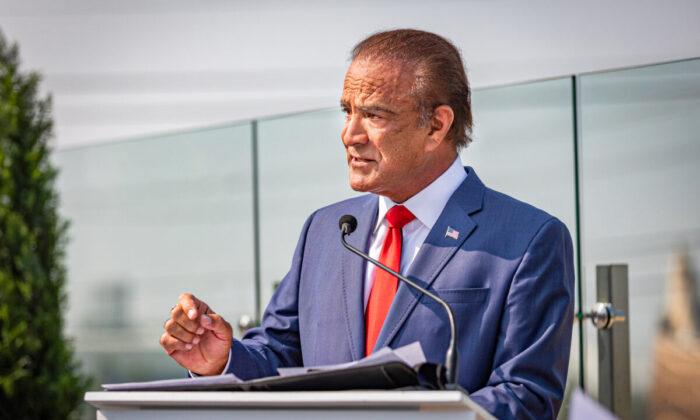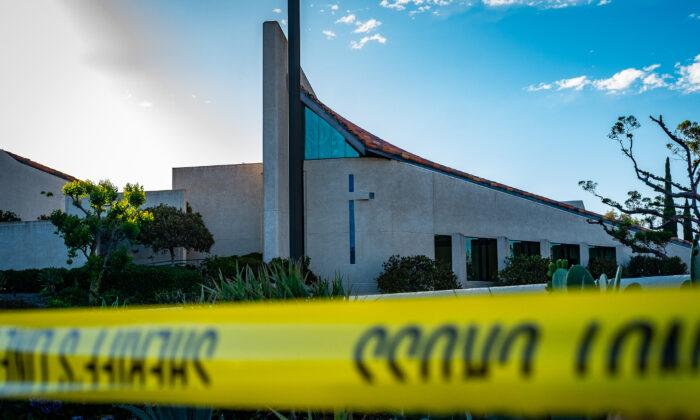San Francisco officials’ leniency on drugs is creating lawlessness in the streets, according to a drug addict’s mother who has been imploring policymakers to enforce stricter laws that criminalize drug use and sales in the city.
“[Police] are on the streets and they’re not arresting anybody and the dealers are selling right in front of them,” Jacqui Berlinn said in an interview with EpochTV’s “California Insider” show.
“They allow the addicts to use in front of other people ... Other people who live there can openly see the addicts using needles and smoking ... acting out in the ways that are harmful to them or the public.”
Berlinn said her 32-year-old son is addicted to fentanyl, which has left him homeless and physically “bent over” so that he “walks like an old man.”
“A lot of people say, you have to let him hit rock bottom,” Berlinn said. “My son’s rock bottom, I believe, is death. Right now, he needs to be coerced to get help because his fear of the withdrawals from this drug are so great.”
Berlinn’s son was introduced to drugs as a teenager and he became addicted after suffering from anxiety and depression.
These days, Berlinn’s son wanders the streets between Oakland and San Francisco’s Tenderloin neighborhood since drugs are more accessible there.
In the past, she traveled throughout the Tenderloin neighborhood in search of her son, and she described the area as a “zombie apocalypse” with drug dealers on the corners of the street accompanied by homeless drug addicts.
Amid the open selling and consumption of drugs, Berlinn has noticed that police officers in the area allow the lawlessness on the streets to continue.
“I feel like they’re enabling these people to commit a slow suicide,” Berlinn said. “The people that are there that are homeless and addicted are being preyed upon and they are deteriorating slowly. It’s a slow death. They’re out in the elements. Many of them have open sores and they’re in bondage to these drugs.
“San Francisco particularly helps keep them in that situation by not prosecuting the drug dealers, by allowing the open-air drug scenes.”
Berlinn says he once reported to police a naked homeless man in plain sight.
Police stated there wasn’t anything they could do, as people were frequently naked in the area, she said.
As a result of witnessing the drug crisis in San Francisco, Berlinn called for a statewide initiative to treat mental illnesses, rather than a county-by-county approach, that stating homeless drug addicts come to San Francisco due to the “hands-off, live and let live policy.”
Berlinn says that Proposition 47—a law that reduced some lower-level crimes to misdemeanors from felonies—and other state laws has led to fewer arrests for possession of small amounts of drugs and shoplifting.
After a recent arrest, Berlinn’s son expressed a desire to get sober. He made a call to check into a rehabilitation center but was turned away due to a lack of availability. He was sent temporarily to a transitional sober living home outside of San Francisco, where he eventually turned back to drugs.
The transitional sober-living home offered no mental health services, while allowing him to come and go as he pleased, Berlinn said.
Her son has shared that some addicts who’ve lived in the housing with no support services have overdosed while alone and nobody knew or was around to revive them.
“His greatest fear is detoxing from fentanyl because it’s supposed to be incredibly horrible,” she said. “He could even die from it if he’s not getting help and being monitored.”
Berlinn says it’s important to remember that homeless drug addicts are people’s family members and loved ones who are trapped.
“They’re definitely not cracking down on these open-air drug scenes,” Berlinn said. “They’re allowing it to flourish and the solution I hear is safe injection sites. My son says that then there’ll just be more people like him on the street because they’re just making it easier to be a drug addict. They’re normalizing drug addiction.”



